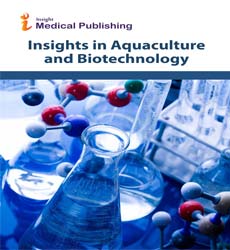African mud catfish sustainable aquaculture in west Africa a case of Nigeria fish farming
Abstract
Aquaculture has become one of the fastest growing food production unit sub-sectors in the world due to declining worldwide landings of captured fisheries to meet the ever increasing fish demand of the growing human population. Aquaculture is also the fastest growing animal base food producing sector, particularly in developing countries. The sector alone contributes nearly a third of the world’s supply of fish products. Aquaculture produces more than 220 species unlike terrestrial farming which the bulk of production is based on a limited number of species. However, sustainability of aquaculture in the face of dwindling and decrease in the capture fisheries is a challenge that needs to be addressed. Nigeria is the most populous black nation in the world, with an estimated population of above 200million people. Nigeria is the most populous black nation in the world, with an estimated population of above 200million people. Its citizens as at the end of 2012 have a projected fish demand of 2.66 million tonnes of fish. Fish supply within the said period was 132 million tonnes. This figure was made up of 0.7 million tonnes from importation and 0.62 million tonnes from both artisanal and aquaculture. Fish, a relatively cheaper source of food protein is very important in the diet of many Nigerians and is thus in high demand. The Nigerian fishery sector is characterized by a rich resource base, comprising of harvests from capture and culture. Due to over exploitation of the capture fisheries, the hope of the Nigerian fisheries is in aquaculture development. The constraints to investment in aquaculture in the Niger delta include scarcity of quality seeds (fingerlings}, high cost of feeds; high cost of labor; inadequate water supply; lack of land for pond establishment; lack of capital; lack of modern technologies; poor storage facilities, high cost of transportation, mortality of fish due to diseases and water pollution and poaching. Clarias gariepinus, also known as the African mud catfish, exists in the wild but it is also cultivated in ponds, cages, and pens and is of great commercial importance. This is an omnivorous fish with a preference for a plank tonic diet. It also feeds on other types of food items such as insects, insect larvae, pupae, fish, and fish remains. It also has a propensity for being carnivorous. Propagation of these fishes is widely practiced in the tropics, and is predominantly practiced and cultured by 90% of the farmers in Nigeria
Open Access Journals
- Aquaculture & Veterinary Science
- Chemistry & Chemical Sciences
- Clinical Sciences
- Engineering
- General Science
- Genetics & Molecular Biology
- Health Care & Nursing
- Immunology & Microbiology
- Materials Science
- Mathematics & Physics
- Medical Sciences
- Neurology & Psychiatry
- Oncology & Cancer Science
- Pharmaceutical Sciences
